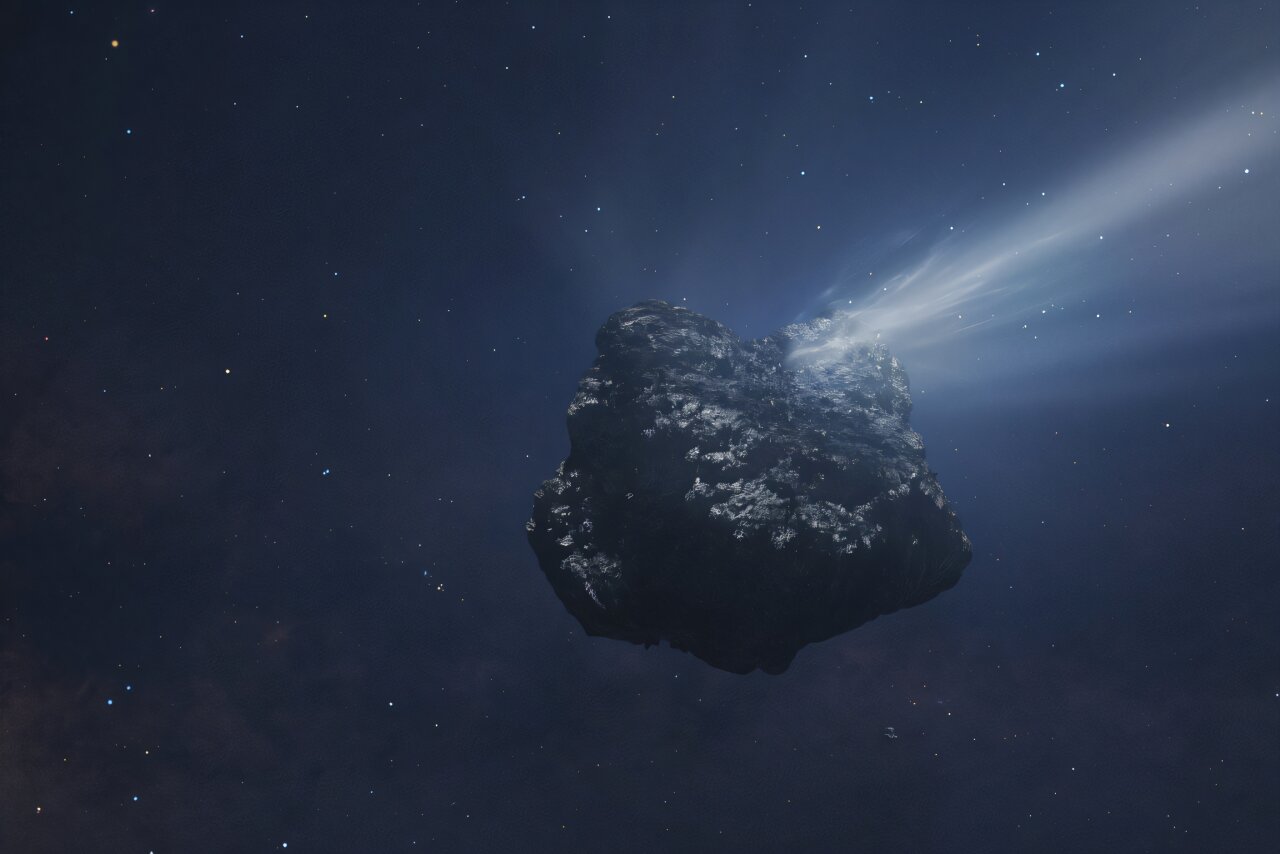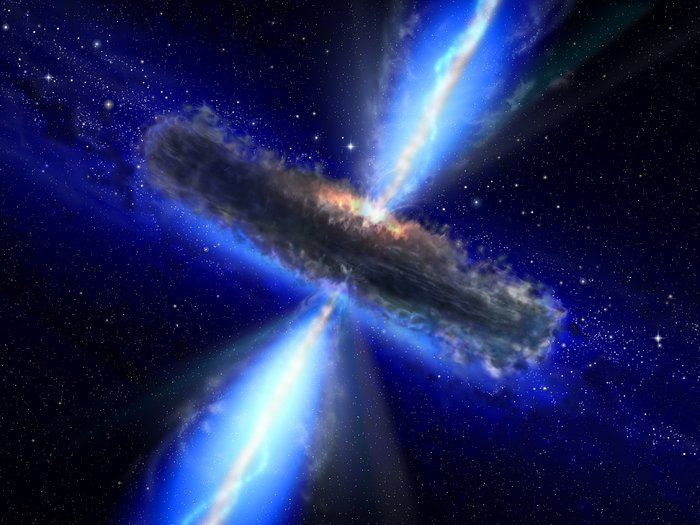In the vast, icy darkness beyond Neptune—where sunlight barely reaches and temperatures plummet to hundreds of degrees below zero—a sleeping giant has begun to stir. Astronomers watching through one of the most powerful telescopes on Earth have detected molecular outbursts erupting from the surface of Comet C/2014 UN271 (Bernardinelli-Bernstein), the largest and second most distantly active comet ever observed.
The discovery is a scientific milestone. Using the Atacama Large Millimeter/submillimeter Array (ALMA) in Chile, researchers have, for the first time, recorded complex outgassing behavior from this frozen behemoth as it traveled 16.6 astronomical units (AU) from the sun—more than halfway to Neptune. At that staggering distance, solar warmth is just a faint whisper.
“This comet is enormous—about 85 miles wide—and yet, even at that distance, it’s alive,” said Nathan Roth, lead author of the new study published in The Astrophysical Journal Letters, and a researcher at American University and NASA’s Goddard Space Flight Center. “We’re not just seeing a smudge in the sky. We’re watching the heartbeat of a world that’s been hidden for billions of years.”
The Slumbering Giant From the Oort Cloud
To appreciate this moment, one must understand just how far Comet C/2014 UN271 has traveled. It likely originated in the Oort Cloud, a theoretical shell of icy debris that surrounds our solar system like a ghostly halo. This shell, which may stretch as far as a light-year from the Sun, is a reservoir of primordial material—frozen relics from the formation of the solar system over 4.6 billion years ago.
Most Oort Cloud objects remain hidden, too faint and distant to detect. But every so often, a gravitational nudge sends one tumbling inward. Such is the journey of C/2014 UN271. First spotted in 2010 images but officially discovered in 2014 by astronomers Pedro Bernardinelli and Gary Bernstein, this comet is unlike anything we’ve seen before. It is, by all estimates, more than 10 times the size of a typical comet—large enough to be mistaken for a small moon.
And now, for the first time, we’re watching it wake up.
The Breath of an Ancient World
Thanks to ALMA’s exceptional sensitivity and precision, astronomers detected jets of carbon monoxide gas venting from the comet’s nucleus—molecular evidence of activity that had never been directly observed in a comet so far from the Sun.
“Carbon monoxide is incredibly volatile,” said Roth. “Even in deep cold, it can turn from solid to gas and drive outgassing. What we’re seeing are pressurized jets of this gas being released—possibly from sun-warmed patches of the surface or internal heat escaping through fractures.”
The findings also confirm and expand on previous ALMA observations that identified the comet’s gargantuan size and the significant halo of dust and gas—known as the coma—surrounding it.
By measuring the thermal emissions, the team was able to better estimate the dust content and further validate the comet’s size. “This is not just a theoretical model. ALMA gave us the tools to directly measure this comet’s behavior and chemistry,” Roth added.
A Laboratory of the Early Solar System
Comet C/2014 UN271 offers a rare window into the ancient past.
Born in the same chaotic era that formed the planets, the icy core of this comet may contain clues to the very ingredients that seeded life on Earth. These ingredients—water, organic molecules, and volatile gases—were likely delivered to early Earth by a bombardment of comets and asteroids.
“Every time we learn more about comets like UN271, we’re also learning more about ourselves,” said Dr. Stefanie Milam, a NASA astrochemist not involved in the study. “The molecules it carries could tell us where Earth’s water came from—or even where the chemistry of life began.”
Understanding the activity of such a distant comet is also essential for building better models of comet evolution. Until now, scientists believed that comets only began to show significant activity once they came much closer to the Sun. But this discovery challenges that assumption.
“It tells us that comets don’t have to be in the inner solar system to change,” Milam said. “They can come alive much earlier than we thought.”
What’s Next for the Wandering Giant?
As C/2014 UN271 continues its slow descent toward the Sun—it is expected to reach its closest approach in 2031—astronomers anticipate even more fireworks. As the comet warms, more frozen gases like carbon dioxide, methane, and water ice are likely to sublimate, intensifying its outgassing and revealing more about its structure and composition.
The scientific community is watching closely. Future observations, both from Earth-based telescopes and possibly space missions, could track this transformation in detail. Such a prolonged approach gives researchers a rare opportunity to observe an Oort Cloud comet evolve in real time.
“There’s still so much we don’t know,” Roth said. “Will it fragment? Will it develop complex jets like we see in closer comets? Every day it draws closer to the Sun is a chance to learn something new.”
A Messenger From the Edge
In many ways, C/2014 UN271 is more than just a scientific curiosity. It’s a cosmic emissary—a frozen messenger bearing secrets from a part of the solar system we’ve never touched, and can barely imagine.
It reminds us that our solar system is not static. It’s dynamic, restless, and full of ancient travelers emerging from the dark to tell their stories. With every pulse of carbon monoxide from its icy core, this giant comet whispers across the gulf of space:
“I was there at the beginning. Watch me, and I’ll show you how it all began.”
Reference: Nathan X. Roth et al, The First Detection of Molecular Activity in the Largest Known Oort Cloud Comet: ALMA Imaging of C/2014 UN271 (Bernardinelli–Bernstein) at 16.6 au from the Sun, The Astrophysical Journal Letters (2025). DOI: 10.3847/2041-8213/add526






